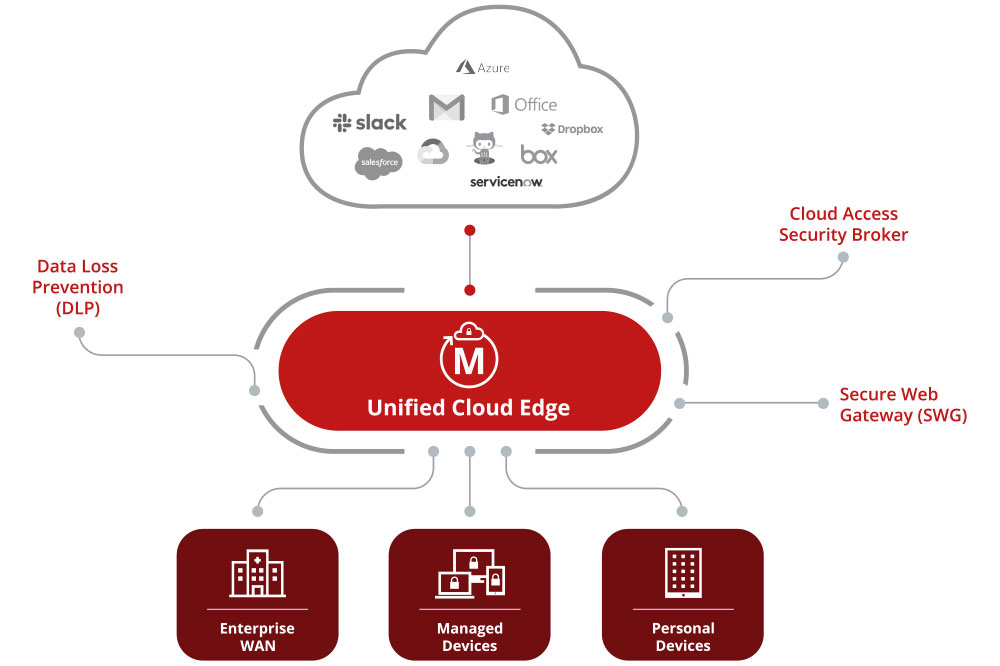Working with a multi-cloud environment isn’t always easy, especially when it comes to ensuring that all areas with sensitive data are secured. Thankfully, McAfee is hoping to alleviate some of the challenges associated with a multi-cloud environment with its new Unified Cloud Edge, which promises to unify the security policies across all devices, networks and the cloud.
According to a recent McAfee study, 81% of organisations have separate management controls for Data Loss Prevention (DLP) and Cloud Access Security Broker (CASB) deployments, which can lead to more complexity and lower security efficacy. Through the new Unified Cloud Edge, McAfee says that IT departments will now be able to set one rule that will be applicable to all areas.
“Data and applications have shifted to the cloud, but secure cloud adoption has proved to be elusive for organisations as they struggle with limited security resources along with environments and tools that require news skills for security professionals,” said Anand Ramanathan, vice president of product management and marketing at McAfee.
“The volume of critical enterprise data will continue to grow alongside cloud adoption which will require organisations deploy the right data protection tools while also reducing the complexity of security to more easily help enable increased employee productivity.”
One instance where the new Unified Cloud Edge could help is in controlling how employees can access and move data. Previously there was a requirement to have one policy in place for users who wanted to move a file from a local machine to a USB stick, while there had to be a completely separate policy for those wishing to move a file from a company’s cloud storage account to a personal account. With Unified Cloud Edge, that policy can be made universal across all instances.
Key benefits of Unified Cloud Edge include:
- Comprehensive visibility and consistent controls over data from device to cloud.
- Unified policies, incident management, investigations, workflows, and reporting for cloud, network, and endpoint data protection.
- A new level of simplicity regarding threat and data protection administration.
- Consistent defenses against cloud-scale threats by analyzing billions of events with machine learning for devices everywhere.
- A consistent user experience when dealing with the security of sensitive data in multiple environments.
“Enterprises are seeking to reduce complex security infrastructure by replacing traditional, on-premises security appliances with cloud-delivered security solutions,” said Robyn Westervelt, research director at IDC Data Security Practice.
“The convergence of security solutions that traditionally have functioned independently will improve an organisation’s security posture by creating security defenses that work cohesively to defend against attacks. But even more importantly, this convergence will help ease the burden of managing security and compliance across hybrid and multi-cloud environments which is one of the most significant challenges enterprises face today.”

